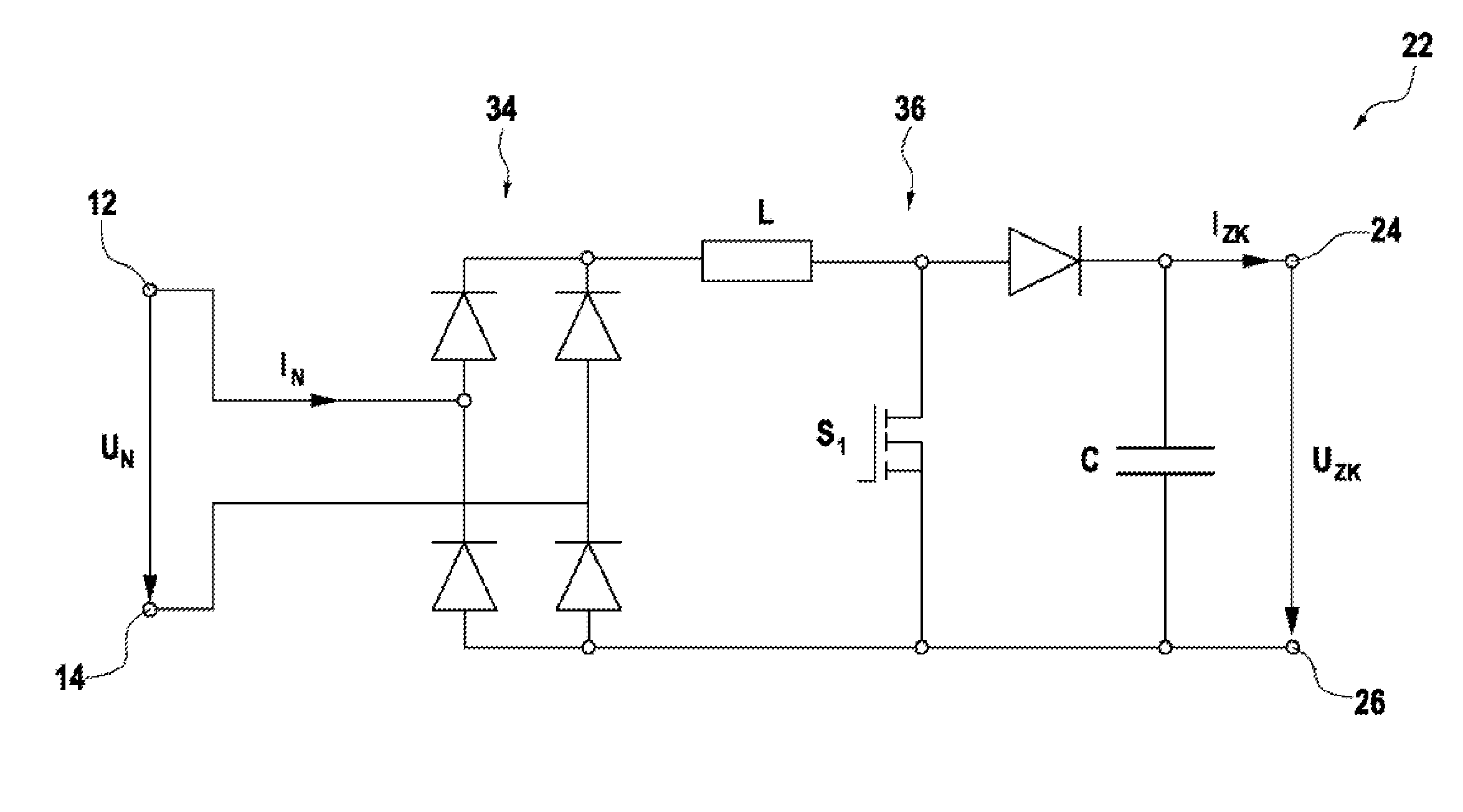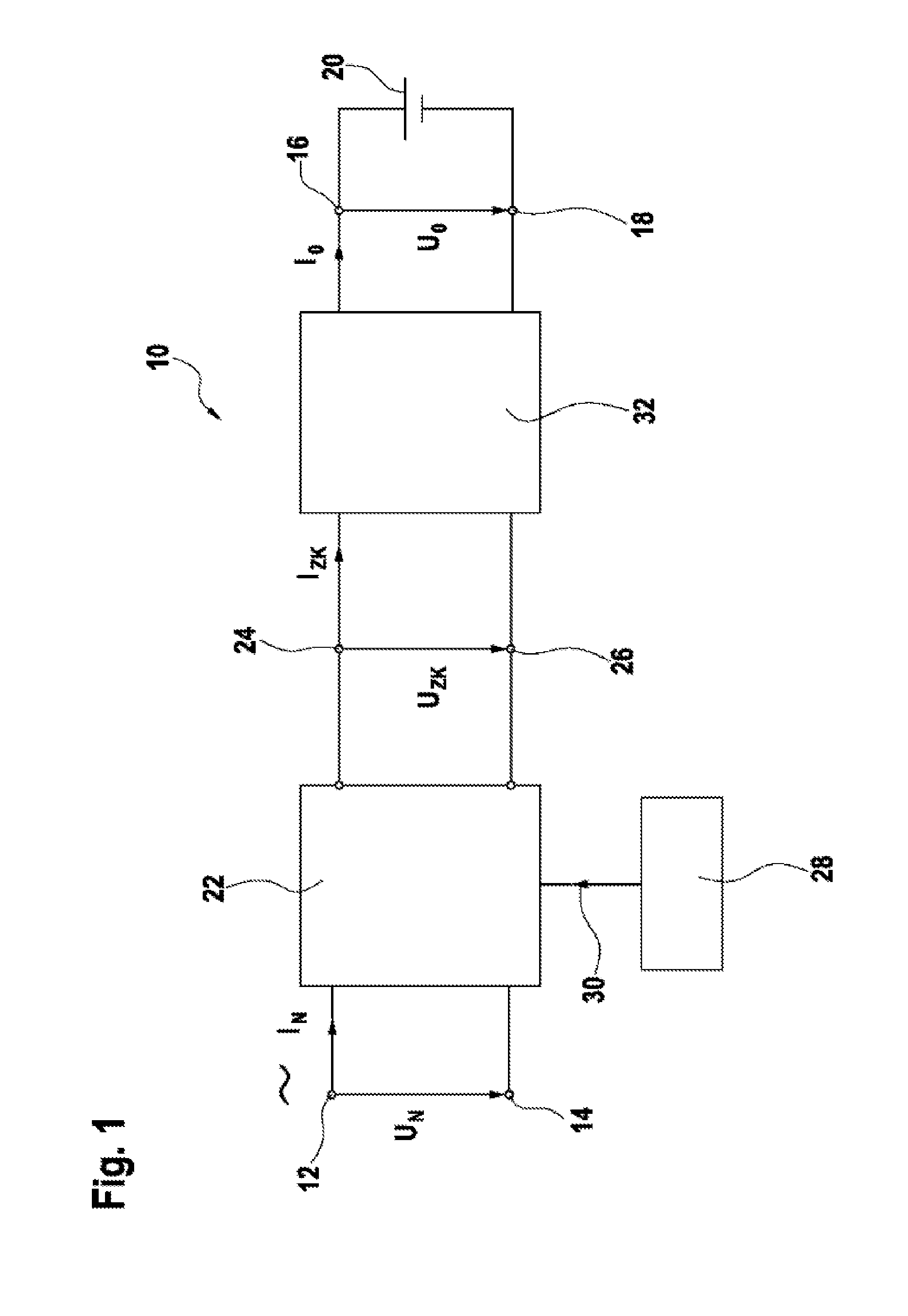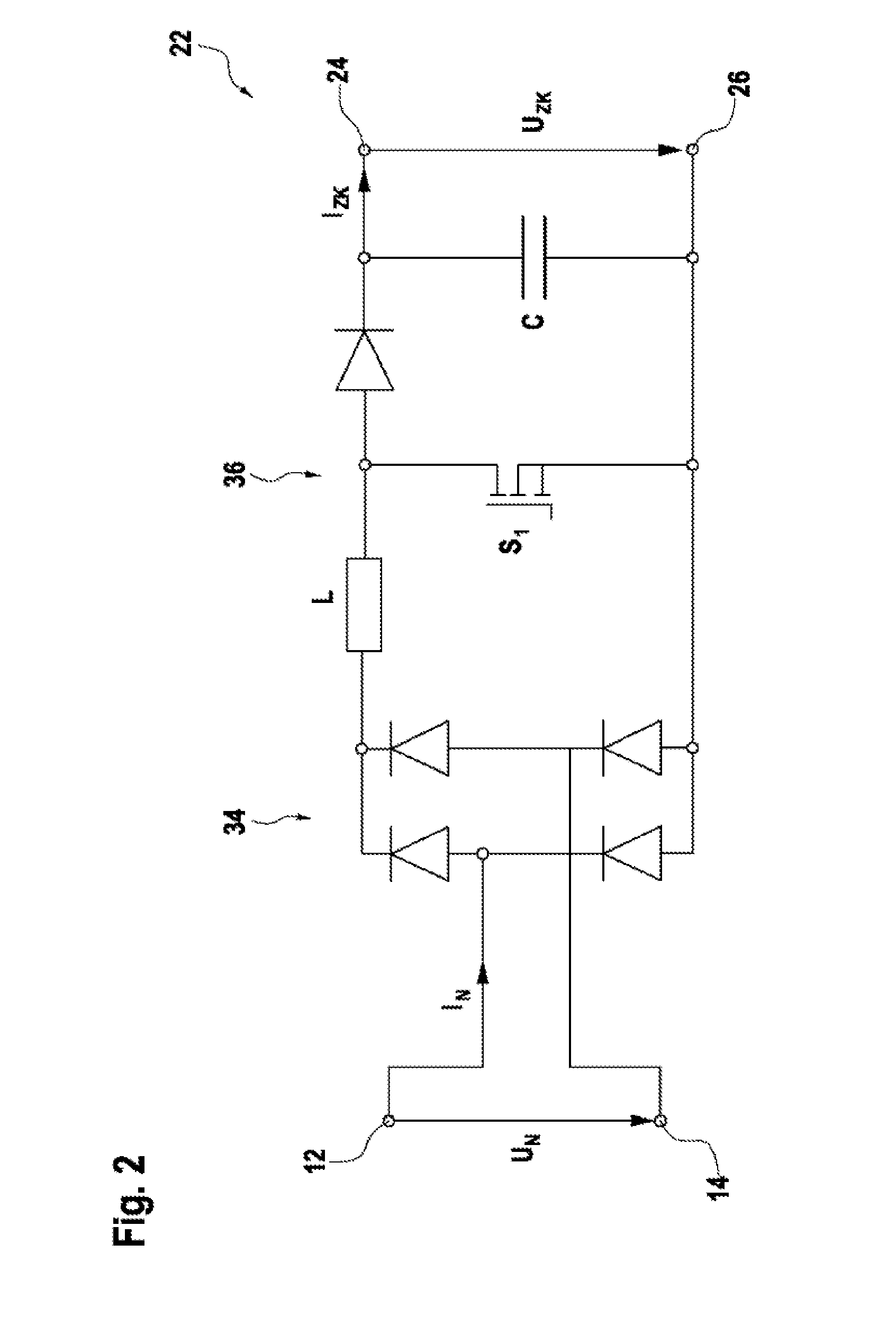Charging device and method for charging an electrical energy store
a charging device and electrical energy technology, applied in the field can solve the problems of reducing the life of electrically isolating converters generally used with electromagnetic transmission elements, unable to achieve optimal design, and unable to achieve the effect of reducing the complexity of controlling the charging of electrical energy stores, reducing the cost, and improving reliability
- Summary
- Abstract
- Description
- Claims
- Application Information
AI Technical Summary
Benefits of technology
Problems solved by technology
Method used
Image
Examples
Embodiment Construction
[0034]FIG. 1 shows schematically the circuit of a charging device according to the invention, which is generally denoted by 10.
[0035]The charging device 10 has a first input voltage terminal 12 and a second input voltage terminal 14, which together form a voltage input. In addition, the charging device 10 has a first output voltage terminal 12 and a second output voltage terminal 14, which together form a voltage output. The input voltage terminals 12, 14 are designed to be connected to an AC voltage source (not illustrated). The input voltage UN which preferably corresponds to the public grid voltage is present between the input voltage terminals 12, 14. That is to say that the AC voltage source in a preferred embodiment of the invention is a low-voltage public grid. The charging device 10 provides an input current IN across the input voltage terminals 12, 14. The input voltage UN is an AC voltage and the input current IN is an alternating current, which AC voltage and alternating ...
PUM
 Login to View More
Login to View More Abstract
Description
Claims
Application Information
 Login to View More
Login to View More - R&D
- Intellectual Property
- Life Sciences
- Materials
- Tech Scout
- Unparalleled Data Quality
- Higher Quality Content
- 60% Fewer Hallucinations
Browse by: Latest US Patents, China's latest patents, Technical Efficacy Thesaurus, Application Domain, Technology Topic, Popular Technical Reports.
© 2025 PatSnap. All rights reserved.Legal|Privacy policy|Modern Slavery Act Transparency Statement|Sitemap|About US| Contact US: help@patsnap.com



